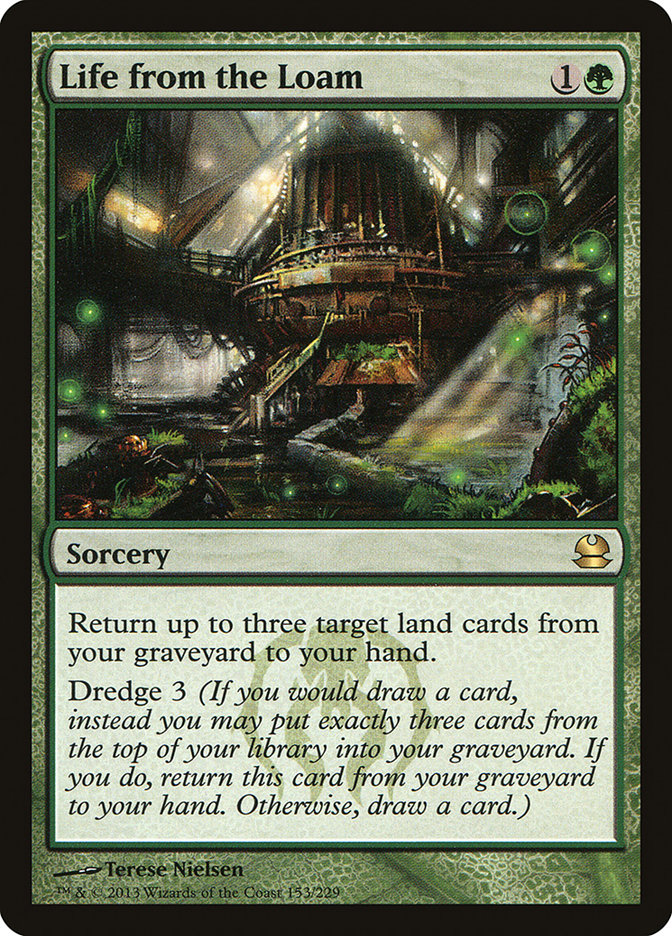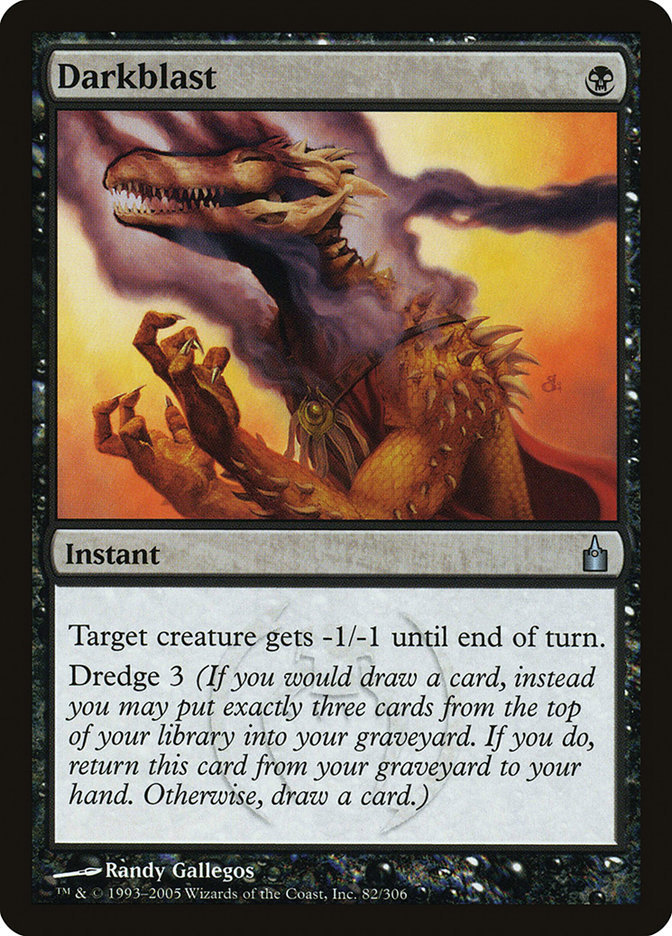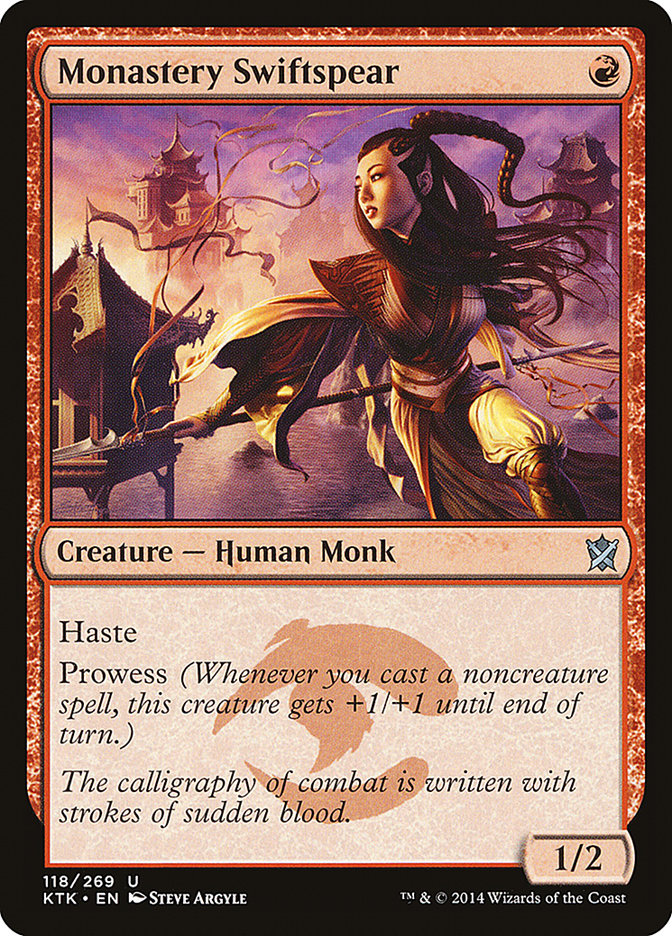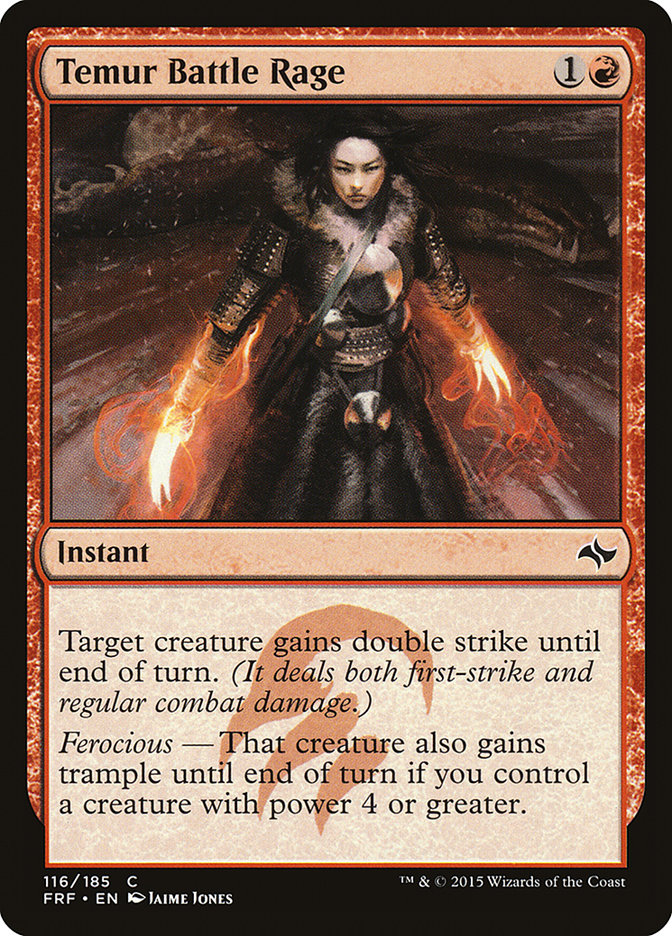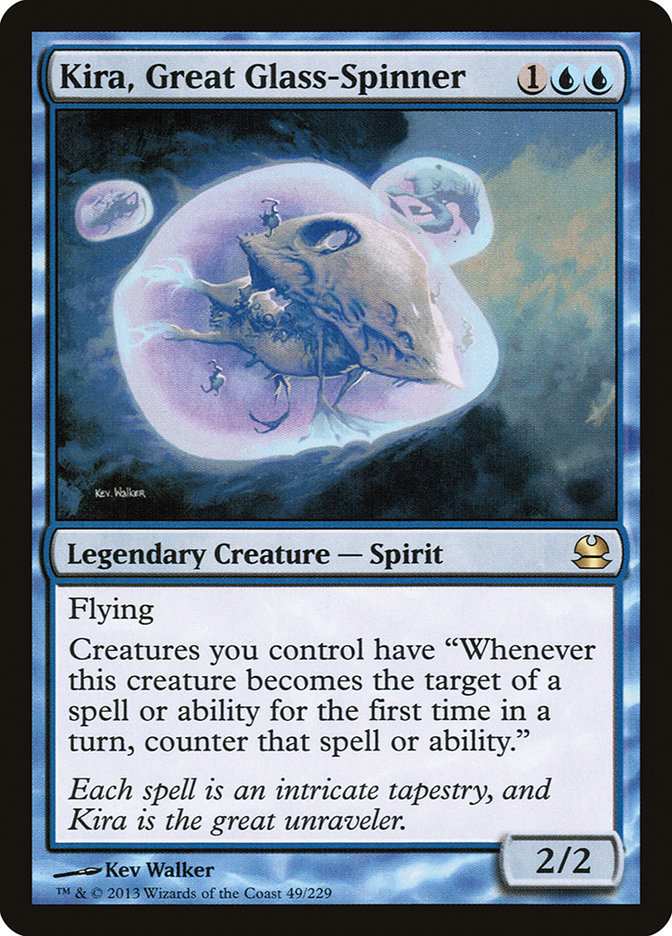Modern may not change as quickly as Standard since cards never rotate out, but don’t expect it to stagnate. As new cards are printed and new synergies are discovered, people innovate new decks or dust off old ones, and the metagame shifts.
Keeping abreast of these kinds of changes can put you one step ahead in the metagame, whether you want to play the new hot decks or be ready to defeat them. In recent history, the Modern Eldrazi decks that led to the banning of Eye of Ugin
Today I’m going to talk about three decks that have grown in popularity recently. Dredge and Death’s Shadow Aggro have been doing extremely well in recent Magic Online leagues, and Jeskai Control has had some great showings at recent SCG Tour® events, including #SCGDFW.
Dredge
Creatures (28)
- 4 Golgari Grave-Troll
- 4 Stinkweed Imp
- 4 Narcomoeba
- 3 Street Wraith
- 4 Bloodghast
- 1 Vengeful Pharaoh
- 4 Prized Amalgam
- 4 Insolent Neonate
Lands (16)
Spells (16)

With the printing of Insolent Neonate and Prized Amalgam in Shadows over Innistrad, graveyard-based decks that abuse the dredge mechanic have changed into something that more closely resembles Legacy Dredge than the Zombie Infestation / Life From the Loam value engine that used to rule Modern Dredge.
The new Modern Dredge deck abuses the high dredge cost of cards like Golgari Grave-Troll and Stinkweed Imp by throwing them in the graveyard in early turns. They mill themselves for huge numbers early in the game, and begin to play with their graveyard as an extension of their hand.
Bloodghast, Narcomoeba, and Prized Amalgam can enter the battlefield from the graveyard. Street Wraith and Gitaxian Probe provide card draw effects to replace with dredging, while Faithless Looting, Insolent Neonate, and Burning Inquiry also provide discard outlets to put dredgers in the graveyard. Vengeful Pharaoh, Darkblast, and Gnaw to the Bone provide relief against any aggro decks that may be quicker. And finally, Conflagrate can be used as a Wrath effect or a bit of reach to finish the game after casting Life From the Loam to get back lands.
Recurring a copy of Darkblast every turn can be backbreaking for aggressive decks full of X/1 creatures like Affinity and Infect. Destroying an attacker each turn with Vengeful Pharaoh and then dredging it back into the graveyard can put a serious damper on fair decks like Jund and Delver.
Dredge is also pretty great against control decks. If you counter its spells or destroy its creatures, they’ll just end up back in the graveyard ready to come back the next turn. With the ability to out-grind the control half of Jeskai Control and out-race the Nahiri/Emrakul combo, the matchup seems great for Dredge unless Jeskai can find its hate cards.
So if Dredge is such a strong deck against so many strategies, how can you prepare? Graveyard-based strategies tend to do well in a metagame that is unprepared. There are plenty of great cards to hate out these decks, like Rest in Peace, Relic of Progenitus, and Grafdigger’s Cage. Exile effects are particularly relevant; Dredge runs zero basic lands to find from Path to Exile. But if enough players leave these cards at home instead of putting them in their sideboard, Dredge can take advantage of the opportunity and steal quite a few games.
For decks that can’t include graveyard hate, or games where you can’t draw it, there are other alternatives. Because Modern is a proactive format, the strategy of “be faster than your opponent” that usually works applies here too. If you can beat down harder or faster, Dredge has very little interaction to stop you. Cards like Lord of Atlantis; Ezuri, Renegade Leader; and Gavony Township help you outclass their threats and Lingering Souls can get in the way of their pesky Narcomoebas. Finally, slowing their dredge engine by countering important spells like Faithless Looting, Burning Inquiry, and Insolent Neonate can buy you the time you need.
Death’s Shadow Aggro
Creatures (19)
Lands (17)
Spells (24)

Death’s Shadow Aggro plays creatures that can have an incredibly high power and toughness for their mana cost, backed up by the Temur Battle Rage and Become Immense combo from the Atarka Red decks of last Standard. To fill the graveyard, increase consistency, and grow Death’s Shadow, they play cards like Street Wraith, Gitaxian Probe, and Mishra’s Bauble to cycle through their deck. The fetchland and shockland manabase allows you to grow Death’s Shadow, Wild Nacatl, and Steppe Lynx all at once. And the “free” and cheap instants synergize with Monastery Swiftspear to round out the aggressive creature base.
Playing against this deck can feel a bit like playing against Infect. Efficiently-costed creatures and pump spells combine to form the same aggro-combo strategy you see in Infect. However, this deck has less weakness to toughness-based removal spells like Lightning Bolt and Dismember. None of its threats except Steppe Lynx die to Lightning Bolt if they cast Mutagenic Growth in response. Even Steppe Lynx survives if they also activate a fetchland. And unlike Infect, Death’s Shadow Aggro takes advantage of the damage you do to yourself via Thoughtseize, Phyrexian mana, and your manabase.
Another strength of Death’s Shadow Aggro is how surprising it is to many Modern players. Other than its recent success on Magic Online and its appearance at Pro Tour Oath of the Gatewatch that was overshadowed by Eldrazi, it is relatively unknown. Only one copy made Day 2 at the recent #SCGDFW. And because Death’s Shadow Aggro wants its life total to be relatively low, many decks play right into its plan, helping it along as the game progresses. The combat math of “can I survive the counter-attack next turn?” becomes quite complicated when you consider Death’s Shadow’s growth and the arsenal of pump spells the deck packs. I’ve even overheard a Death’s Shadow Aggro player at the next table say “Lightning Bolt myself for the win!”
Unlike traditional zoo decks that run a combination of Lightning Bolt, Lightning Helix, and Path to Exile, Death’s Shadow Aggro runs very few removal spells. Instead, Temur Battle Rage granting double strike and trample is enough to overcome most Modern creatures that would block its path. A couple of copies of Lightning Bolt and Thoughtseize are the only interactive spells to be found in the maindeck.
Like many efficient, aggressive decks, Death’s Shadow Aggro is weak to cards like Chalice of the Void, Ensnaring Bridge, and Ghostly Prison. But if you don’t want to have to include cards that could also hurt your strategy, a healthy amount of unconditional removal spells will often do the job. While Lightning Bolt may be weak against the deck, Terminate and Path to Exile truly shine, especially if you can two-for-one them and catch a Become Immense or Temur Battle Rage on the stack.
Another option to defeat them is to hold back your aggression until they’ve damaged themselves significantly to turn on their copies of Death’s Shadow. Then unleash a wave of aggression that kills them before they can take advantage of their low life total.
Jeskai Control
Creatures (6)
Planeswalkers (4)
Lands (19)
Spells (31)

Splinter Twin and Deceiver Exarch used to team up to be the finisher of choice for Modern control decks to end the game after establishing control. But after the Splinter Twin combo began assimilating Grixis Delver, Temur Tempo, and even Living End, it was banned in Modern. Luckily, Ancestral Vision was unbanned and Nahiri, the Harbinger was printed, leading to a resurgence in blue-based control decks.
Starring some of Modern’s best counterspells, Jeskai Control uses a combination of Remand, Mana Leak, and Spell Snare to stop the opponent’s early plays. The amazing removal suite afforded by R/W adds Lightning Bolt, Path to Exile, and Lightning Helix to the deck. And if the metagame demands, sweepers like Wrath of God, Supreme Verdict, and Anger of the Gods are available as well. Ancestral Vision, Serum Visions, and Nahiri, the Harbinger keep the cards flowing and Snapcaster Mage lets you do it all over again.
Once control is established and the opponent is out of resources, Jeskai Control can end the game in one of two ways: a flurry of burn spells and Snapcaster Mage beatdown, or Nahiri, the Harbinger finding Emrakul, the Aeons Torn. Note that the deck only runs fourteen mana-producing lands, so it can never actually cast Emrakul.
This is a deck I’ve picked up recently as part of my Modern gauntlet, and it’s a powerhouse. It has an incredible amount of flexibility during deckbuilding as you adapt to the metagame. The choices and lines of play during the game are numerous. And best of all, it’s incredibly fun to play! But how do you beat it?
Control decks are inherently weak to aggressive decks. One of the reasons Death’s Shadow Aggro has been so successful online is because it establishes a battlefield presence before counterspells come online, and its creatures are resilient to Lightning Bolt, Path to Exile, and Electrolyze. Merfolk decks that run Cavern of Souls, Aether Vial, and Kira, Great Glass-Spinner throw a wrench into Jeskai Control’s plans. And if Jund gets an aggressive draw, it can win before Ancestral Vision unleashes its waterfall of card advantage.
On the other side of the coin, any deck that can go bigger than Jeskai Control also gives it a hard time. R/G Tron decks make more mana than Jeskai Control can ever hope to and use it for threats that eat other late-game decks for breakfast. Karn Liberated, World Breaker, and Ulamog, the Ceaseless Hunger cement that mana advantage even further by attacking Jeskai Control’s manabase and restricting it to just a spell or two per turn.
Conclusion
These newcomers have become more powerful and more popular, and it looks like they are here to stay. They are all great choices for the next Modern Classic or Open on the SCG Tour®, so be ready to beat them—or to sleeve them up! Have a wonderful week, and as always: happy gaming!


